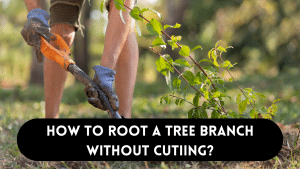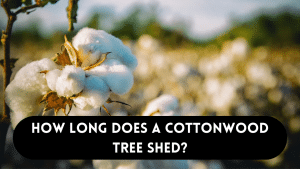Removing a palm tree stump from your yard is essential for maintaining a clean and aesthetically pleasing landscape. While it can be a labor-intensive task, following the DIY approach can save you money and give you a sense of accomplishment. In this guide, we will take you through the step-by-step process of removing a palm tree stump by hand, using basic tools like a shovel, saw, and crowbar. Additionally, we’ll explore alternative methods, including using a stump grinder and chemical treatments, for those seeking quicker and more efficient options.
Steps to Remove a Palm Tree Stump by Hand
Preparing for the Removal
Before you start the removal process, make sure you have all the necessary tools and equipment ready. You’ll need a sturdy shovel or garden fork for digging, a sharp knife or saw for cutting through surface roots, and a crowbar for prying and lifting the stump. Additionally, wearing appropriate safety gear, such as gloves and eye protection, is crucial to prevent any injuries during the process.
Step-by-Step Guide
1. Digging around Surface Roots:
To begin, identify the surface roots of the palm tree stump and start digging around them using your shovel or garden fork. The goal is to expose the roots and make it easier to work with them. Be cautious not to damage the roots, as they play a vital role in the tree’s stability and nutrient absorption.
2. Slicing or Sawing the Surface Roots:
Once the surface roots are exposed, use a saw or sharp knife to slice or saw through them. This process will help loosen the roots and prepare them for removal. Make sure to use a saw suitable for the size of the roots, and work patiently to avoid any accidental injuries.
3. Exposing the Deeper Roots:
With the surface roots removed, continue digging deeper around the stump to expose the deeper roots. Take your time and use the shovel or garden fork carefully to avoid damaging the root system. The more roots you expose, the easier it will be to lift the stump from the ground.
4. Using a Crowbar or Shovel to Lift the Stump:
Once you’ve exposed the deeper roots, it’s time to lift the stump from the ground. Use a crowbar or shovel to pry the stump gradually, applying force around the circumference of the stump. Remember to work methodically and be patient, as this process may take some effort.
Alternative Methods for Stump Removal
1. Stump Grinder:
For those seeking a quicker and more efficient method, a stump grinder can be a great option. A stump grinder is a machine specifically designed to grind tree stumps into small wood chips, effectively removing them from the ground. This method requires less physical effort and can save you time and energy.
2. Chemical and Natural Methods:
If you prefer a hands-off approach, you can explore chemical or natural methods to remove the stump. These methods involve using chemicals or natural manures to rot the stump gradually. While this approach takes longer to fully remove the stump, it requires minimal physical labor.
3. Horticultural Vinegar:
Another chemical option is using horticultural vinegar to kill new sprouts that may emerge from the stump’s root system. This method helps prevent regrowth after the initial removal but might take some time to be fully effective.
4. Disposing of the Removed Stump and Debris
Once you’ve successfully removed the palm tree stump, you’ll need to properly dispose of the stump and any debris. You can use the chopped wood as mulch in your garden or consider recycling it if possible. Some local waste management facilities may accept tree debris for composting, so be sure to explore your disposal options in an environmentally responsible manner.
5. Preventing Stump Regrowth
After you’ve removed the palm tree stump, it’s important to prevent any potential regrowth from the remaining root system. Apply a stump killer or herbicide to the exposed roots to inhibit sprouting. Additionally, regularly monitor the area for any new growth and promptly address it to avoid future stump-related issues.
DIY vs. Professional Stump Removal: Which to Choose?
While the DIY approach can be fulfilling, sometimes stump removal tasks can be challenging or too time-consuming. Consulting a professional tree removal service can be a wise choice, especially for larger or more stubborn stumps. Professionals have the experience, tools, and expertise to handle even the most difficult stump removals while ensuring safety and minimal disruption to your landscape.
Safety Considerations During Stump Removal
Stump removal, especially by hand, involves physical labor and the use of tools that can pose risks. Always prioritize safety:
- Wear appropriate safety gear, including gloves, eye protection, and sturdy footwear.
- Use tools correctly and maintain them in good condition to prevent accidents.
- Work cautiously to avoid strains or injuries, taking breaks when needed.
- If using chemical treatments, follow instructions carefully and avoid contact with skin or eyes.
Rejuvenating Your Landscape Post-Stump Removal
Once you’ve successfully removed the palm tree stump, it’s time to rejuvenate your landscape. Here are some steps to consider:
- Soil Improvement: After stump removal, the soil in that area may be compacted or depleted. Add organic matter like compost to improve soil structure and fertility before replanting.
- Plant Selection: Choose new plants or trees that complement your landscape and thrive in the conditions of the cleared area. Consider factors like sun exposure, soil type, and water requirements.
- Mulching: Apply a layer of mulch around newly planted vegetation to conserve moisture, suppress weeds, and protect roots from temperature extremes.
Preserving Trees: Sustainable Stump Removal
In the spirit of sustainability, consider repurposing the palm tree stump and debris:
- Creative Uses: Turn the stump into a decorative focal point by hollowing it out and using it as a planter or seating.
- Natural Habitat: Leave a portion of the stump as a habitat for insects and small animals, contributing to your garden’s ecosystem.
- Composting: If the stump is chipped into smaller pieces, it can be added to compost piles, eventually enriching your garden soil.
Evaluating DIY Stump Removal vs. Professional Assistance
Choosing between a DIY approach and professional assistance depends on various factors:
- Size and Difficulty: Large or deeply rooted stumps may be better handled by professionals equipped with heavy machinery.
- Time and Effort: DIY removal requires time and effort. Assess your schedule and physical capability before making a decision.
- Cost Considerations: While DIY is cost-effective, professional services save time and minimize risks. Compare costs to determine the best value.
Maintaining Stump-Free Landscapes: Preventive Measures
After successfully removing a palm tree stump, it’s important to implement preventive measures to avoid future stump-related challenges:
- Proper Tree Removal: When removing a tree, ensure the stump is ground down or removed completely to prevent future growth.
- Regular Inspections: Periodically inspect your landscape for any signs of new sprouts or regrowth from old stumps. Address these promptly to prevent them from developing into full-fledged stumps.
- Mulching: Applying mulch around trees and plants can deter weeds and unwanted growth, reducing the chances of new stumps forming.
Celebrating the Transformation: Landscape Makeover Ideas
The completion of palm tree stump removal opens up opportunities to reimagine and redesign your landscape. Consider these makeover ideas:
- Garden Oasis: Create a lush garden area with vibrant flowers, shrubs, and decorative elements like benches and fountains.
- Outdoor Entertainment: Design a space for outdoor gatherings with a patio, seating, and a fire pit or barbecue area.
- Zen Retreat: Craft a tranquil retreat with a calming water feature, meditation space, and ornamental grasses.
- Wildlife Haven: Choose native plants to attract local wildlife, fostering a harmonious ecosystem in your backyard.
People Also Ask
How long does it take for a palm tree stump to decompose naturally?
The natural decomposition of a palm tree stump can take several years. Factors such as the climate, soil conditions, and the tree’s age can impact the decomposition process.
Can I replant in the same spot after stump removal?
Yes, you can replant in the same spot after stump removal. However, ensure that all roots and remnants of the old stump are removed to provide a healthy environment for the new plant.
Can I rent a stump grinder for DIY removal?
Yes, many hardware stores or equipment rental companies offer stump grinder rentals. Make sure you’re comfortable using the machine safely and effectively before proceeding.
Are there any permits required for palm tree stump removal?
Local regulations may vary, but in some areas, permits may be required for tree removal, especially for larger trees. Check with your local municipal authorities to understand any necessary permits before starting the removal process.
Conclusion
Removing a palm tree stump by hand can be a rewarding task, though it requires patience, physical effort, and the right tools. The step-by-step process outlined above can guide you through the DIY removal method. However, for a quicker and more efficient approach, consider using a stump grinder or exploring chemical treatments.
Whatever method you choose, always prioritize safety and, if needed, seek professional assistance from a tree service or landscaping company to ensure a successful stump removal process. With persistence and the right approach, you can transform your yard into a clean and beautiful space free from palm tree stumps.




